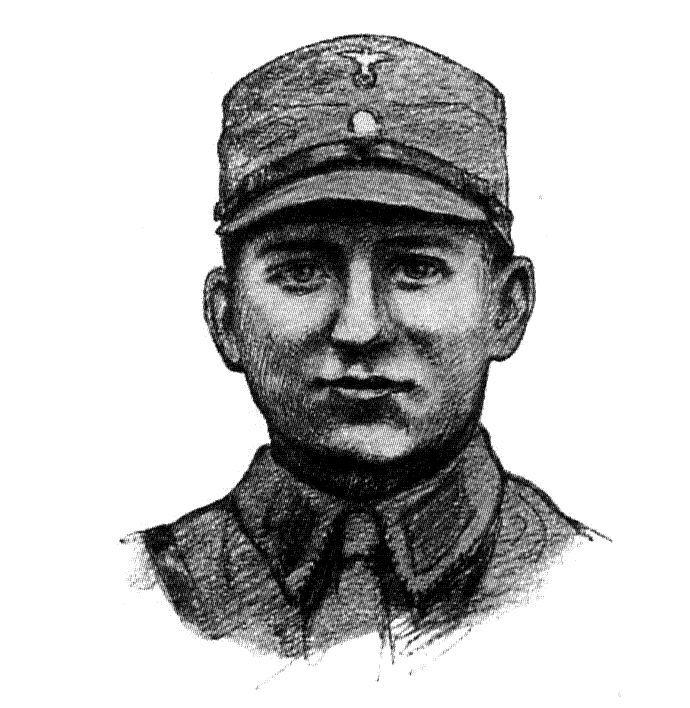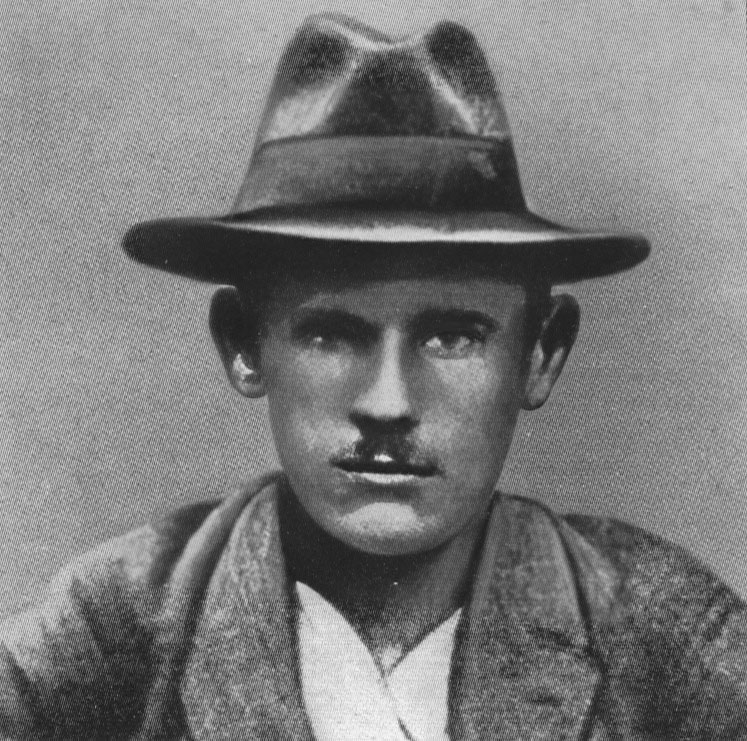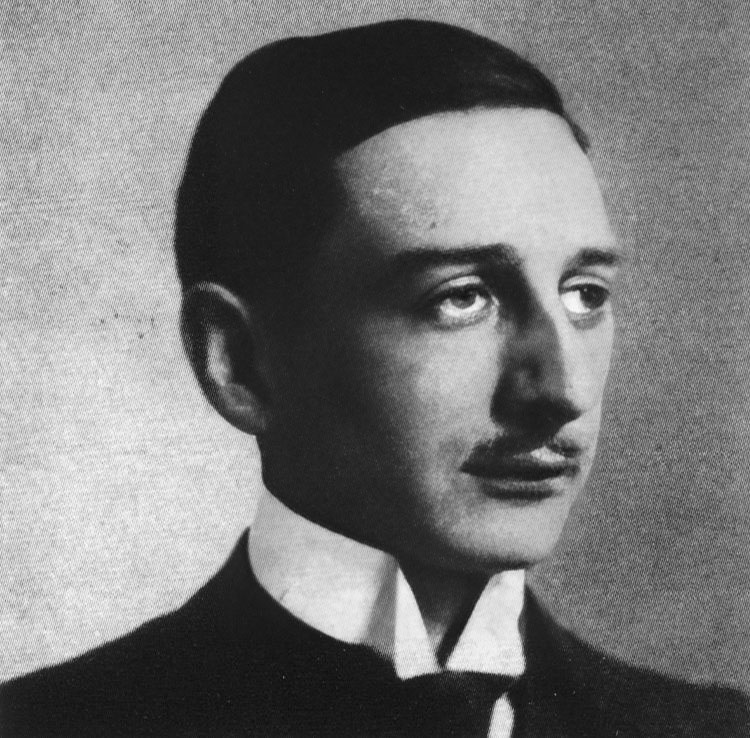
Blood Martyrs of the National Socialist Movement
The Year 1926
Fritz Renz
(*5 January 1906, † 21 February 1926 in Altlandsberg)

Fritz Renz was a resistance fighter against the Weimar Republic and a Blood martyr to the National Socialist movement.
In February 1926, Fritz Renz took part in a march to Altlandsberg to campaign for Adolf Hitler with supporters. In the course of this there was friction with Reichsbanner people at the „Friedrichslust“ inn, which developed into a brawl and shooting. When the front bannermen retreat to their meeting place, they discover that Fritz Renz is missing. He had been shot down in the street in the darkness. The Reichsbanner people dragged the severely wounded man back into the bar and murdered him in a bestial manner. He died of terrible wounds in the early hours of 21 February.
In Neuenhagen, where he was buried, a street was named after him. A large sports field in Erkner was named „Fritz Renz“ by Gauleiter Kube in 1933. In Altlandsberg, a memorial plaque was unveiled in 1934 at the site of his murder by former Frontbannführer Daluege.
Franz Kortyka
(*4 August 1899, † 8 June 1926 in Mechtal, Upper Silesia)

Franz Kortyka was a resistance fighter against the Weimar Republic and a Blood martyr of the National Socialist movement.
A fighter’s fate was that of the miner Franz Kortyka. He was seriously wounded in the First World War. In 1921 he fought in the „Bund Oberland“ against the Upper Silesian Polish uprisings. In 1926 he became the first member of the local group Miechowitzi of the NSDAP. He stood his ground against communists, defied the enemy. On 8 June 1926, Franz Kortyka and two comrades were attacked and pelted with stones by a mob of fifty communists, Reichsbanner people and Polish insurgents who had come together in good fellowship. The police look on without intervening. The three National Socialists defend themselves manfully. Then a shot is fired by a communist murderer. Franz Kortyka collapses dead.
Harry Anderssen
(*9 September 1881 in Breslau,† 26 September 1926 in Berlin)

Harry Anderssen [Andersen] was a resistance fighter against the Weimar Republic and a Blood martyr to the National Socialist movement.
Born in Breslau, Anderssen moved with his family to Berlin, where he attended the royal Luisengymnasium up to the Prima and then entered the banking profession as an apprentice. After his apprenticeship, he was hired as an employee of the National Bank, where he remained until his wartime deployment in 1915. Mustered as fit for infantry service, Anderssen received his military training in Kassel. He experienced his baptism of fire on the battlefields of Flanders. After being wounded, he was transferred to Vouzier, where the bank clerk worked in an exchange office. Later he was assigned to a telegraph department. Here the later Sturmführer remained until 1918. Returning from the First World War, Anderssen’s marriage was divorced and he lived with his deaf-mute daughter with his mother. Returning to the banking profession, Anderssen worked at the Prussian State Bank. On 26 May 1925, the forty-three-year-old joined the NSDAP with party number 5,828. At the bank Anderssen founded the first National Socialist business cell. On 26 September 1926, the National Socialist movement in Berlin brings its third victim. The „Angriff“ reported on it in a later issue in a shocking way:
„It is 17 August. The few National Socialists fighting in the red Kreuzberg on seemingly hopeless posts have invited to a discussion evening in a pub in Stallschreiberstraße. The bank clerk Harry Anderssen, a good speaker in this crowd, crosses sharp blades with his opponents. When the other party comrades set off for home late at night, the communists ask Anderssen to stay a little longer to discuss the matter further with them. Anderssen remains alone in the pub. In the good faith that interested listeners are gathering around the table, he tells them about Hitler. Finally, however, it is time for the others to go home. He says goodbye and steps out into the street. Just as he unchains his bicycle, which is standing in front of the pub, the door opens, several communists step out of the pub, form a circle around him, and while one of them speaks short, choppy sentences to him, another lashes out with an iron object, smashing the unsuspecting SA. man’s entire lower jaw. Not content with that, they then beat the defenceless man, who has been thrown to the ground by the force of the blow, with the heels of their boots, steal his bicycle from him, who is lying senseless in his blood on the pavement, and disappear into the pitch-black sea of houses on Moritzplatz. When Anderssen regains consciousness after a short time, he drags himself back to the pub using all his strength. He alerts the robbery squad.“
When Harry Anderssen is admitted to Urbank Hospital, the doctors find that the lower jaw has been completely shattered by the first blow. Kicks and blows have severely injured the victim’s stomach. Conventional as well as artificial feeding was impossible as a result. The SA storm leader Harry Anderssen died over a month later, still weighing 36 kilos at his death. The dead man was buried on 25 October 1926. „I can no longer miss any event, any meeting of the movement, because I know that he will be there“, were the words attributed to his mother after the death of her son.
A commemorative plaque was dedicated and installed at the murder site at Stallschreiberstr. 45 (Kreuzberg district) on 27 September 1936:
„At this spot, on 17 August 1926, the SA man Harry Anderssen was slain by red murder. Don’t let the hero in your soul die. Storm 45/8 ‘Harry Anderssen’.“
Another memorial plaque, inaugurated on 26 September 1933, was located in the anteroom to the main cashier’s office (1st floor) of the Preußische Staatsbank (Seehandlung), Markgrafenstraße 38 (Mitte district):
“Believing in the rebirth of the German Reich,our workmate Harry Anderssen, SA man, fell 26 September 1926.“
The Berlin SA storm 45/8 was named after him. In 1936, the current Boecklerpark in Berlin was given the name „Harry Anderssen Park“ in honour of the SA man Anderssen; after the occupation of Germany in 1945, it had to be renamed Urbanpark. In 1951 it was temporarily given the name of the first DGB chairman Boeckler.
Emil Müller
(*10 December 1905, † 27 September 1926 in Germersheim)

Emil Müller was a resistance fighter against the Weimar Republic and a Blood martyr to the National Socialist movement.
A regiment of terror was led in Germersheim by the notorious French Lieutenant Rouziers during the French occupation of Germany. He once said goodbye to another officer with the words: „I’m going to hunt Germans now!“ A German man from Adolf Hitler’s entourage also became a victim of this fiend. When Rouziers shot down Josef Mathes, a citizen of Germersheim, for no reason on the night of 26-27 September 1926, the SA man Müller, a twenty-one-year-old worker, confronted him without threatening him. This was reason enough for the French officer to put a bullet in the young German’s chest. A French „military court“ acquitted Rouzier’s murderer. The witnesses, on the other hand, were sentenced to fines for „insulting the occupying forces“.